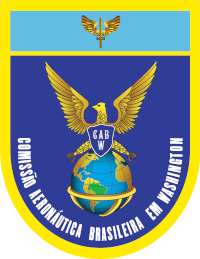In 1940, although the World War II was still geographically confined to Europe, the conflict began to spread fast through the other continents, pushing the opposing forces to seek alliances with other countries that would support their cause.
Aware of the fact that the raging conflict was rapidly sweeping across the continents, on January 20, 1941, the Brazilian Government made the decision to centralize the air operations of the Brazilian Armed Forces under just one command. Therefore, the Air Ministry, or Ministry of Aeronautics, was created with the appointment of Mr. Joaquim Pedro Salgado Filho as its first minister.
However, the Brazilian Government soon realized that there was an urgent need to modernize its existing fleet of aircraft. This improvement was made possible after a loan agreement and a lease were negotiated between the Government of Brazil and the Government of the United States.
Accordingly, the Air Ministry assigned a delegation composed of Air Force captains Miguel Lampert, João Mendes da Silva and Joaquim da Silva Gomes. Their mission in the United States was to contact the North American Government and certain aviation companies, in order to take the first steps towards the procurement and purchase of aeronautical materials for the Brazilian Air Force.
For the purpose of managing the negotiations, transactions and business procedures, an office became necessary. Therefore, in September 1941, the Brazilian delegation rented a house located at 3402 Garfield Street, in Washington, D.C.
Following the agreement with the US Government, the first group of aircrafts, Curtiss P-36 and P-40 models, began arriving in Brazil in 1942. In order to coordinate the acceptance and subsequent shipping of the purchased material to Brazil, a new office had to be established. This time, it was located in New York, since at that time the material acquired on the US market was totally shipped by vessel, trough the Lloyd Brasileiro agency.
Although these activities were already well underway after 1941, the Brazilian Aeronautical Commission in Washington (BACW), was not officially established until August 21, 1945, when the President of the Republic of the United States of Brazil, Getúlio Dornelles Vargas, signed the Decree No 19,477. A house was rented at 1501 18th Street, N.W., Washington, D.C., which became the operational headquarters of the growing activities of procurement and purchase of aeronautical material for the Brazilian Air Force.
After World War II ended, the Brazilian Aeronautical Commission in Washington coordinated and shipped most of the US aeronautical material surplus to the Ministry of Aeronautics in Brazil.
On March 15, 1951, the Brazilian Minister of Aeronautics authorized the Chief of BACW to initiate the process of acquiring a larger property, suitable to the needs of a growing procurement office.
On May 5, 1951, a four-floor building located at 1701 22nd Street, N.W., Washington, D.C., was acquired, which has been the BACW’s headquarters ever since.
On October 1, 1968, BACW’s office in New York was closed, and its operations and activities were transferred to the Washington, D.C office.
Increasingly, there was a need to store the purchased material prior to its shipment to Brazil, leading to the construction, in July 1975, of a warehouse located at 4601 Beech Road, Temple Hills, MD. In addition, the increasing amount of aeronautical material acquired through the US Air Force program known as Foreign Military Sales (FMS) made it necessary to establish an office close to the USAF Logistics Command. Therefore, on August 23, 1983, the Regulation No 957/GM3 created the Brazilian Liaison Office at the Wright Patterson Air Force Base, home of USAF`s Logistics, in Dayton, Ohio.
In 2002, the Brazilian Air Force Command decided to put under BACW`s direction the operations previously managed by the Commission office located in Europe (BACE). Thus, over a 5 year period, BACW became responsible for the activities related to the procurement of armament and aviation parts for Brazilian Air Force worldwide.
Since 1941, the Brazilian Aeronautical Commission in Washington has become a key component of the Brazilian Air Force Logistics Department, helping the Brazilian Air Force to maintain its aviation-related assets in the best operational status.

Social Media